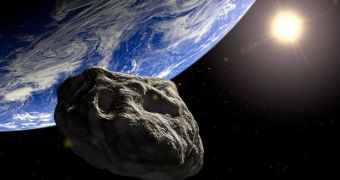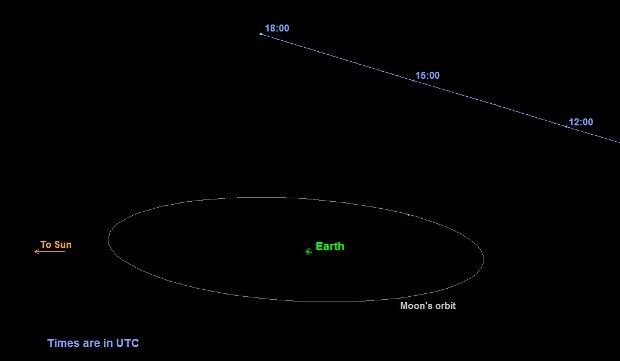Come Saturday, October 31 - that's right, just in time for Halloween - an asteroid of no mean size will buzz by our planet. NASA scientists are calling it the Great Pumpkin and say it measures around 1,300 feet (400 meters) across.
The space rock, whose official moniker is 2015 TB145, was only discovered a few days ago, on October 10, by a team of scientists working on the University of Hawaii's Pan-STARRS I (Panoramic Survey Telescope and Rapid Response System) survey.
Having studied its orbit around the Sun, astronomers are confident to say that this recently discovered asteroid is in no way a threat to our planet.
Its flyby of Earth this coming Saturday will bring it within about 300,000 miles (480,000 kilometers) of our planet, which is the equivalent of 1.3 lunar distances. True, it will be a close call, but there is nothing to worry about.
“The asteroid will fly past Earth at a safe distance slightly farther than the moon's orbit on October 31 at 10:01 a.m. PDT (1:01 p.m. EDT),” NASA scientists explain.
Astronomers are ready to study the asteroid during its flyby
Seeing as 2015 TB145 will come fairly close to our planet, astronomers hope to get a close look at it during its flyby. They're thinking that, with the help of telescopes, they might just manage to image its surface, nooks and crannies and whatnot, at a 2-meter (6.5-foot) resolution.
To do so, researchers will send radio waves towards the space rock and then record them as they bounce off its surface and return to Earth. This should allow them to register details such as the asteroid's shape, its precise dimensions, and even surface features.
Following this weekend visit, it won't be until 2027 that another space rock quite as big as 2015 TB145 will get this mind-bogglingly close to our planet, so it's perfectly understandable why astronomers are so hyped about the flyby scheduled for this Halloween.
“The close approach of 2015 TB145 at about 1.3 times the distance of the moon’s orbit, coupled with its size, suggests it will be one of the best asteroids for radar imaging we’ll see for several years,” explains NASA researcher Lance Benner.

 14 DAY TRIAL //
14 DAY TRIAL // 


